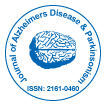Nuestro grupo organiza más de 3000 Series de conferencias Eventos cada año en EE. UU., Europa y América. Asia con el apoyo de 1.000 sociedades científicas más y publica más de 700 Acceso abierto Revistas que contienen más de 50.000 personalidades eminentes, científicos de renombre como miembros del consejo editorial.
Revistas de acceso abierto que ganan más lectores y citas
700 revistas y 15 000 000 de lectores Cada revista obtiene más de 25 000 lectores
Indexado en
- Índice Copérnico
- Google Académico
- sherpa romeo
- Abrir puerta J
- Revista GenámicaBuscar
- Claves Académicas
- TOC de revistas
- Infraestructura Nacional del Conocimiento de China (CNKI)
- Biblioteca de revistas electrónicas
- Búsqueda de referencia
- Universidad Hamdard
- EBSCO AZ
- OCLC-WorldCat
- Catálogo en línea SWB
- Biblioteca Virtual de Biología (vifabio)
- publones
- Fundación de Ginebra para la educación y la investigación médicas
- Pub Europeo
- ICMJE
Enlaces útiles
Revistas de acceso abierto
Comparte esta página
Abstracto
What Animal Models of Parkinsonism Tell us About the Distinct Nicotinic Acetylcholine Receptors Involved in Pathogenesis?
Yuri N Utkin, Elena V Kryukova and Victor I Tsetlin
A prominent degeneration of dopaminergic (DA-ergic) neurons in basal ganglia (striatum and substantia nigra) and a profound loss of dopamine resulting in patient motor dysfunctions are the main characteristics of Parkinson’s disease (PD). The data available indicate a substantial role of nicotinic acetylcholine receptors (nAChR) in molecular mechanisms underlying PD. nAChRs belong to the superfamily of ligand-gated ion channels, their pharmacological profile being determined by an array of subunits forming a distinct receptor subtype. Acetylcholine modulates dopamine release via an interaction with multiple nAChRs subtypes present on the nigrosriatal neurons. This suggests nAChRs as possible targets in the treatment of PD, however the knowledge of subunit composition is necessary for effective drug design. As studies in humans are quite limited, animal models are broadly used for these purposes. For creating experimental Parkinsonism models, low molecular weight toxic organic compounds are commonly used. 1-Methyl-4- phenyl-1,2,3,6-tetrahydropyridine (MPTP), 6-hydroxydopamine (6-OHDA), 1,1’-Dimethyl-4-4’-bypiridinium dichloride (paraquat), pesticide rotenone and ubiquitin proteasome system inhibitors, such as lactacystin and epoxomicin, can be mentioned as applied more often. Both mammalian and non-mammalian animals are used as model organisms, rodent and non-human primates being used mainly as mammalian models. This review summarizes the data obtained on toxic animal models about the involvement of different nAChR subtypes in PD at different stages. The present data suggest that degeneration of nigrostriatal DA-ergic neurons in the animal PD models is accompanied by alterations in the expression level and functional activity of different nAChR subtypes. Both heterooligomeric α6- and/or α4-containing and α7 homooligomeric subtypes are affected and can be regarded as possible targets for intervention.
Revistas por tema
- Agricultura y acuicultura
- Alimentación y Nutrición
- Bioinformática y biología de sistemas
- Bioquímica
- Ciencia de los Materiales
- Ciencia general
- Ciencias Ambientales
- Ciencias Clínicas
- Ciencias farmacéuticas
- Ciencias Médicas
- Ciencias Sociales y Políticas
- Ciencias Veterinarias
- Enfermería y atención sanitaria
- Física
- Genética y biología molecular
- Geología y Ciencias de la Tierra
- Ingeniería
- Inmunología y Microbiología
- Química
Revistas clínicas y médicas
- Anestesiología
- Biología Molecular
- Cardiología
- Cirugía
- Cuidado de la salud
- Dermatología
- Diabetes y Endocrinología
- Enfermedades infecciosas
- Enfermería
- Gastroenterología
- Genética
- Inmunología
- Investigación clínica
- Medicamento
- Microbiología
- Neurología
- Odontología
- Oftalmología
- Oncología
- Pediatría
- Toxicología

 English
English  Chinese
Chinese  Russian
Russian  German
German  French
French  Japanese
Japanese  Portuguese
Portuguese  Hindi
Hindi